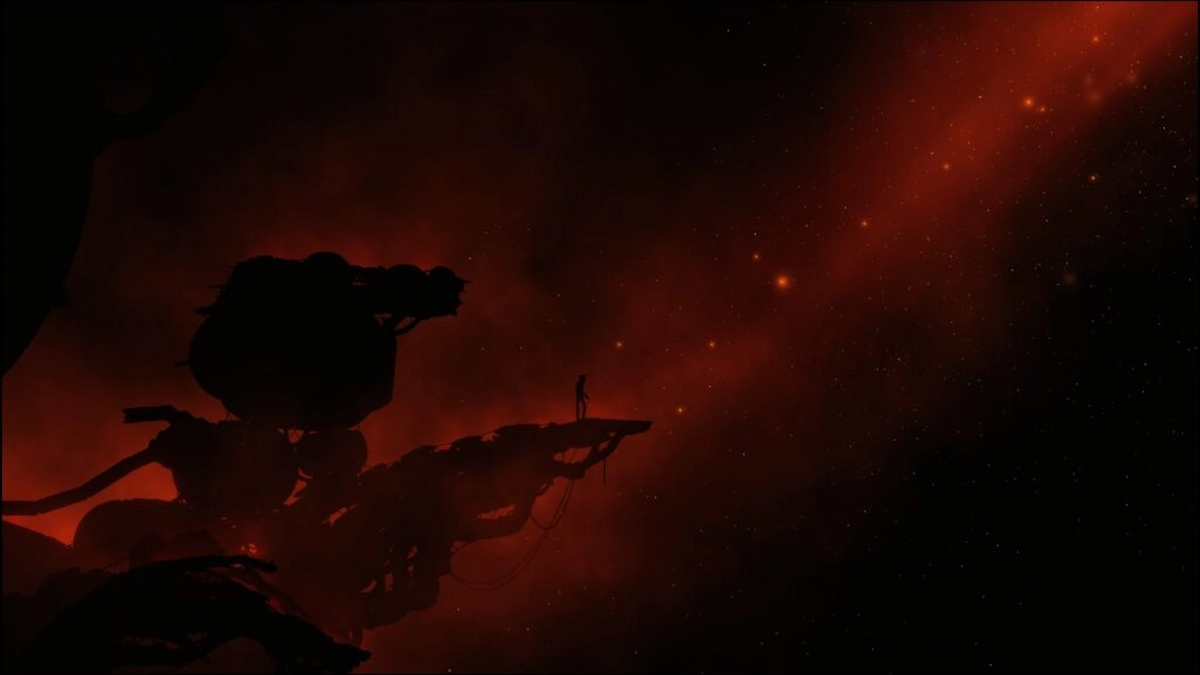A few months ago, a trend took over the social platform X (formerly Twitter), where indie developers were asked to describe their upcoming games in a single tweet. Among the many tweets, one post stood out—a side-scrolling platformer with a bold orange color theme and an intriguing art style. That game was Bionic Bay, and I added it to my wishlist immediately, eager to see what kind of innovation it had to offer.
Now that I’ve played the game, I can confidently say that Bionic Bay has much more depth than it appears at first glance. It’s one of those rare indie titles that truly deserves attention.
A Mysterious Start That Feels Familiar
From the very beginning, Bionic Bay reminded me of games like INSIDE—dropping the player into a mysterious world with no clear explanation, just questions. The ambiguous opening immediately draws you in. The first thing that grabs your attention is the beautiful level design, crafted in detailed pixel art. The environments feel alive, vibrant, and immersive.
It’s worth mentioning that this is the debut game from Mureena Studio, founded by Juhana Myllys. According to his tweets, Myllys personally hand-crafted every pixel of this game—and the care and passion show.
Platforming Meets Physics-Based Puzzle Solving
Bionic Bay is a puzzle-platformer that puts a strong emphasis on physics—specifically on concepts like weight, gravity, and momentum. Within the first hour, you get a solid understanding of how your character’s movement, weight, and jumping mechanics work. But don’t get too comfortable—once that initial hour is over, the real challenges begin.
The puzzles grow more complex and demanding, and while the game tries to weave a story through environmental notes and scattered messages, the narrative isn’t the game’s strongest point. Still, the clever gameplay mechanics make up for it.
Teleportation, Time Control, and Gravity – The Game-Changing Gadgets
What really sets Bionic Bay apart from other platformers are its three unique gadgets. The first—and arguably the most impactful—is a teleportation device. You use it to tag objects in the environment, then swap your position with them at the right moment. This mechanic is so well-designed that it genuinely surprised me with how fun and innovative it felt.
My first time using the teleporter kept me hooked for three straight hours. It’s that engaging. But don’t be fooled—Bionic Bay is not an easy game. The puzzles get tougher, and you’ll need patience, precision, and smart thinking to get through them.
Later in the game, you gain access to time manipulation and eventually gravity-shifting mechanics. These new abilities stack on top of each other, creating complex puzzle layers that feel both challenging and rewarding. When you finally solve a puzzle, you get that wonderful “Aha!” moment that only well-designed games can deliver.
Progressive Difficulty and Visual Variety

The game does a good job of gradually increasing difficulty. Puzzles become more intricate, but they build on what you’ve learned. Level design evolves, and each area introduces new elements to keep things fresh.
Visually, Bionic Bay doesn’t rely on a single look. While the early levels have a striking orange color palette, the game later shifts to black-and-white levels reminiscent of Limbo or Silt, as well as stages in deep greens and blues. This color diversity keeps the game visually interesting throughout its 8–10 hours of gameplay.
Platforming Precision… With Some Hiccups
Despite its brilliance, Bionic Bay isn’t flawless. Sometimes, platforms are hidden or poorly highlighted, making it unclear where to go next. Also, the game doesn’t allow you to move the camera, which can be frustrating when you’re trying to look up, down, or ahead. This becomes an issue in moments when you’re expected to make leaps of faith without being able to see your destination.
Occasionally, the physics system acts up, causing your character to die unexpectedly. For instance, your character might land awkwardly and die for no apparent reason, or a body part may get crushed under an object you didn’t expect to interact with. While some of these moments are unintentionally funny, they can be annoying when you’re stuck in a difficult section.
Checkpoints, Trial and Error, and “Gotcha!” Moments
Thankfully, the checkpoint system is very generous, so even when you fail, you won’t lose too much progress. But be warned—the game occasionally uses “trap deaths” where you’re forced to fail just to learn from the environment. While this is clever the first few times, overuse of this tactic can become frustrating and feel like unfair padding.
Some puzzles require dozens of attempts, and you’ll often need to experiment with different solutions before finding the correct one. Still, for puzzle fans, that’s all part of the fun.
Multiplayer Mode Adds a Competitive Edge
Bionic Bay also includes an online multiplayer mode, where players compete to complete levels as fast as possible without dying. This adds a whole new layer of challenge, especially when more players are involved. If you’re a fan of speedruns or leaderboards, this mode will give you hours of competitive fun.
Replay Value and Final Verdict
Whether you’re playing solo or online, Bionic Bay offers excellent replay value. Trying to complete levels without dying, or racing through them in the fastest time possible, adds serious depth. If you love a good challenge and enjoy games that test your reflexes and brain, this game is for you.
While the story is weak, and a few technical issues hold it back, Bionic Bay shines as a smart, stylish, and satisfyingly difficult platformer. Its unique gadgets, physics-based puzzles, and stunning visual design make it a memorable experience.
